Whether you’re an experienced motorhomer or just starting out, taking a motorhome on a holiday adventure can be daunting. With a bigger and heavier vehicle, it’s very different to driving and manoeuvring a car, particularly when pulling out, navigating roundabouts and country lanes, overtaking and pitching or parking up.
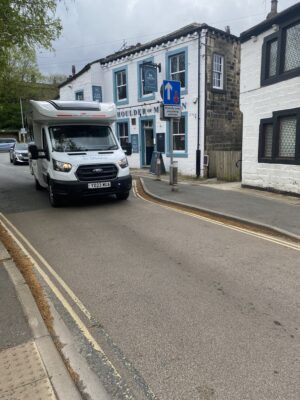
Each year we get lots of motorhome insurance claims for knocks, dents, and accidents on the campsite, on the road, at home, in car parks and in storage.
Good preparation is key, paying attention to tyres and loading, as well as your fitness to drive. Also, being prepared to change your plans, securing belongings, or getting some extra help from motorhome-specific accessories will allow you to have a more enjoyable trip in your motorhome.
In this video, we ask four motorhome experts and experienced owners for their top tips for safe motorhome travel.
Motorhome checks

Matt Simms, aka Motorhome Matt, talks about the importance of motorhome pre-departure checks to help you travel safely. Firstly, check your motorhome’s tyres, and specifically, their pressure, age, condition and that the wheel nuts are tight and torqued.
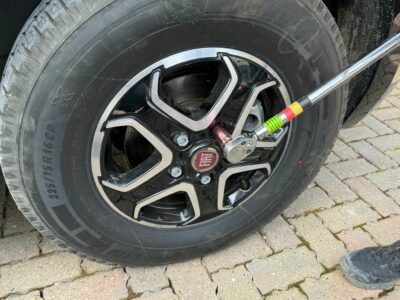
He then goes on to talk about checking the weight of your motorhome and its payload by taking it to a weighbridge.
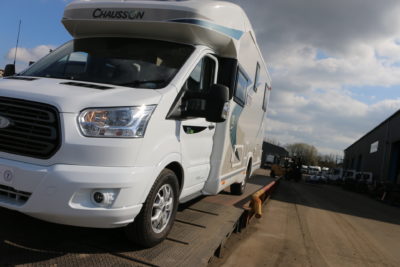
And to make sure before setting off that you’re not overweight and that the motorhome is loaded correctly, spreading the load over the axles, and being careful not to overload the rear garage or rear axle. Also to store heavy items down low and make sure they’re secured so they don’t fly forwards in the event of heavy braking.
Travelling with water
A common question when travelling in a motorhome is how much water to carry. Matt explains that travelling in a motorhome with a tank of water that is half full can create a “dynamic load” in that the water sloshes about and when travelling around corners or roundabouts this will move around and could affect the handling of your motorhome.
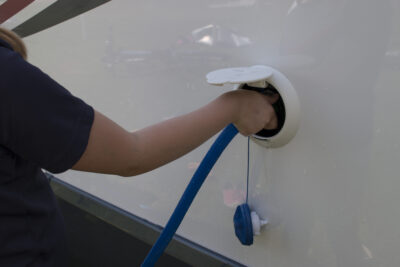
He suggested fully filling up your water tank, if you have enough payload, or adding just enough water for a comfort break on your travels. Matt also reminded owners to check their water levels before setting off home or onto the next campsite, so that you’re not travelling with half a tank of water.
Motorhome-specific sat nav
Matt’s final tip is to invest in a motorhome-specific sat nav, where you can input your motorhome’s height, length and width, so you’re not directed down narrow country lanes or under bridges that are too low and not suitable for your vehicle.
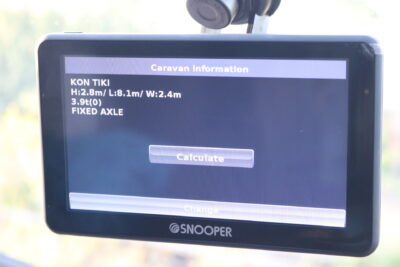
Ex-police officer Karina Igham from Here We Tow talks about making sure you’re fit and well enough to drive a motorhome before every trip and that your driving seat is set up correctly so you can reach all your controls and pedals and that you have a clear view out.

Other pre-departure checks include checking the fluid levels, such as the screen wash and making sure all the exterior lights such as indicators and brake lights are clear and working, as well as the windscreen wipers. She also advised owners to take spare light bulbs in case you might need to change any.
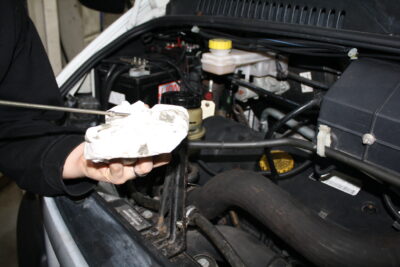
Check the weather before travel
An important tip for safe motorhome travel from Karina is to check the weather before travelling in your motorhome and if bad weather is forecast to delay your journey.
“If you have to drive in bad weather make sure you use your lights, wipers and mirrors,” said Karina. “And be mindful that if you’re driving in bad weather you are going to feel tired more quickly. The same goes if driving in the dark, you may feel more fatigued. You will know how long you can drive your motorhome safely. Have a limit and if you feel you need to take a break, stop and have a break and be safe.”
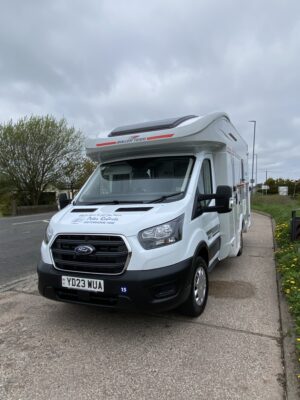
Karina explained that the benefit of a motorhome, if you do feel tired, is that you can usually pull over and find somewhere to stop, such as a campsite, a motorway service station or a parking layby. There are even some places where you can legally park your motorhome for free for the night.
Motorhome specialist Andy Harris from RoadPro talks about two accessories which will make manoeuvring and driving in your motorhome easier and safer.

“For most people, a motorhome is going to be the biggest vehicle that they ever drive,” said Andy. “So it’s really important for safe motorhome travel to be aware of the height, width and length of your motorhome. ”
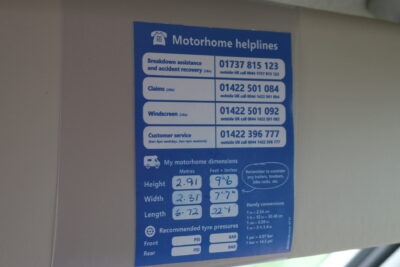
Having a sticker in your sun visor or the corner of your motorhome windscreen detailing these figures as a quick reference point will help you avoid going under barriers which are too low and lanes which are too narrow.
Andy also explained that some motorhomers forget they have the overhang at the back of their motorhome and when reversing or manoeuvring, particularly in car parks and other tight spaces, it’s easy to forget that the overhang will swing around further than you expect.
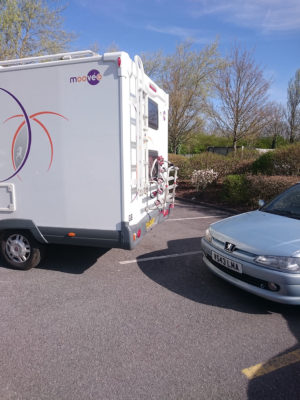
“Being aware of where your motorhome is on the road is important,” said Andy. “You need good vision to the rear of your motorhome and that’s where a rearview camera comes in.”
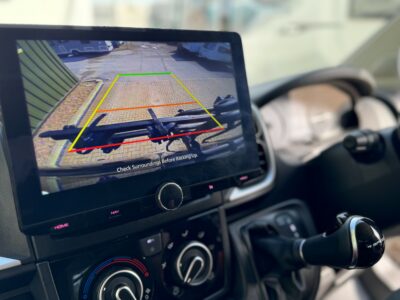
He suggested buying a motorhome rearview camera with two views – one for reversing where you can see the back of the motorhome and one for driving so you can see out the back of the motorhome, as you would with a rear view mirror.
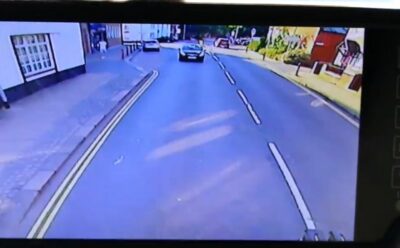
Experienced motorhomer Kat Bird talks about safe motorhome travel in poor weather conditions and some tips on what to do should you be caught in bad weather.

“My first tip would be to delay your journey, whether that be high winds, heavy rain or snow. If you don’t have to leave there and then, and you can put off travel for a day or two then do that,” said Kat. “Make sure all hatches and catches are closed before a storm hits, and that all satellite dishes and awnings or canopies are down as well.
“If you do have to drive in bad weather remember that you are in a high-sided vehicle. When on exposed routes make sure you drive a lot more carefully and hold the steering wheel correctly as you will be moved more in a bigger vehicle. Also slow down, especially in wet conditions, and leave more braking distance between you and other vehicles. Drive slower and be aware of the conditions around you so you have time to adjust to any changing situations.”
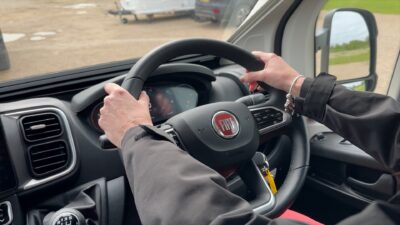
In stormy weather with strong winds, Kat advised to avoid using country lanes where there might be lots more debris from trees etc, unless you’re on an exposed coastal route where it might be safer to come inland and get more protection from banking or houses.
Finally, Kat stressed the importance of making sure any pets are always properly secured for safe motorhome travel.
“For your safety and theirs, you don’t want any distractions, such as them trying to get on your lap when you’re driving,” said Kat. “If you do have to brake suddenly, make sure they’ve got a harness on and a collar that attaches to their harness so they don’t fly forwards and damage their neck.”
We hope you’ve found these expert tips useful and that you enjoy lots of trouble-free adventures and safe travels in your motorhome.
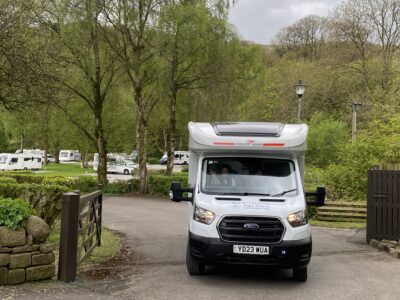
Over to you
As always we’d love to hear any of your safe motorhome travel tips. Simply comment in the box below.


Great advice. I never use the cruise control when it’s raining or the roads are wet. Had a wheel spin once, frightened me, lesson learnt. Suspected aquaplaning.
Great information enjoyed video immensely taking on some good sensible advice
Thanks for the great feedback Ian and glad you enjoyed watching the video. Liz
We always carry a decent tow rope, just in case you stuck on a grass pitch and need a pull out
That’s a great idea Geoff. Thanks for sharing
I’m a retired heavy vehicle driving instructor. All of the tips in the video are very useful. My auditional tip would be for Motorhomes with long rear overhang s to be aware of sudden up hill rises and the risk of grounding. Also sharp turns and the risk of side sweeps. Always remember that everything to the rear pivots from the middle of the rear axle.
Thanks Idris, very good advice
Very good sensable advice
Rowbow
Excellent advice.
very good